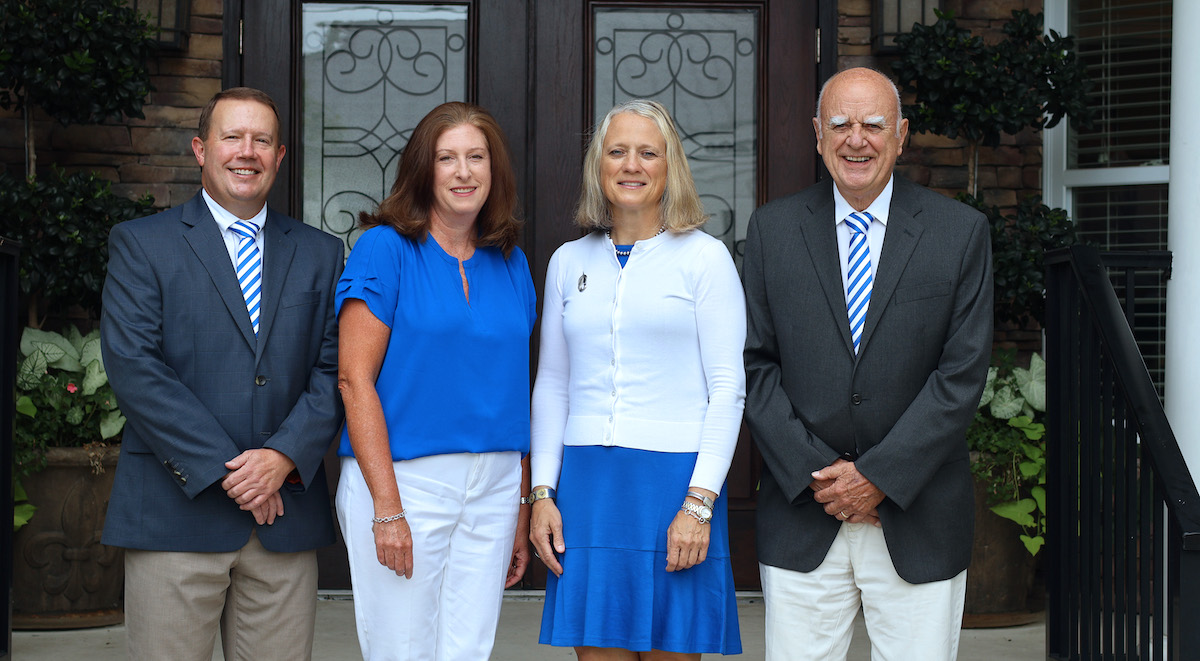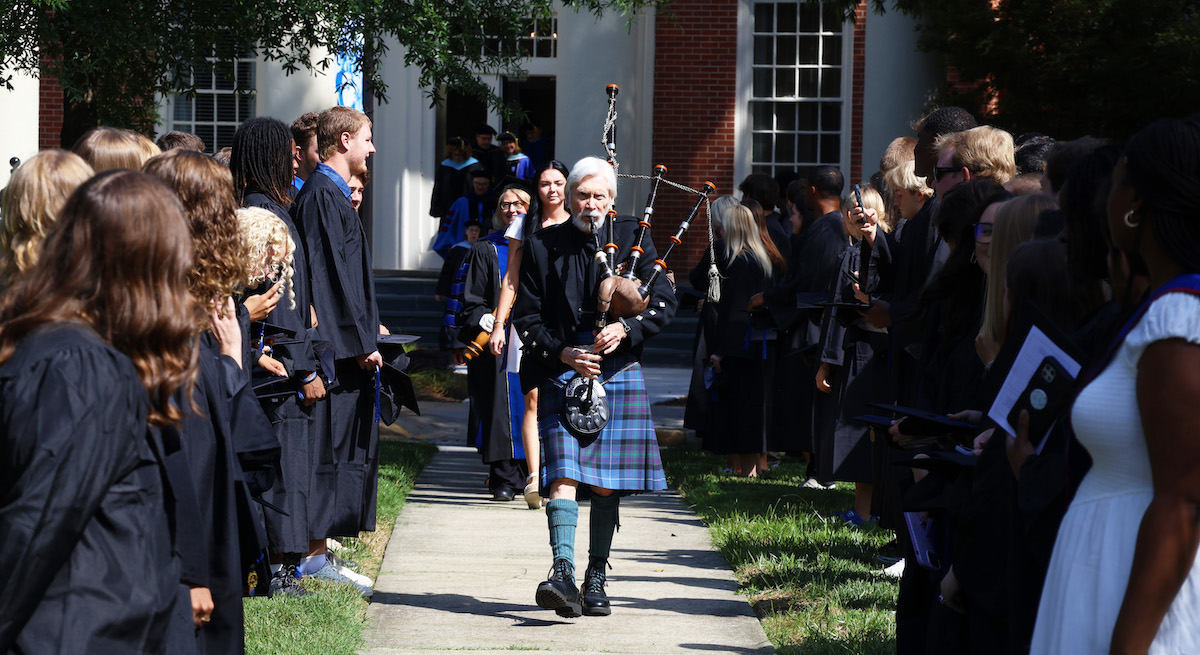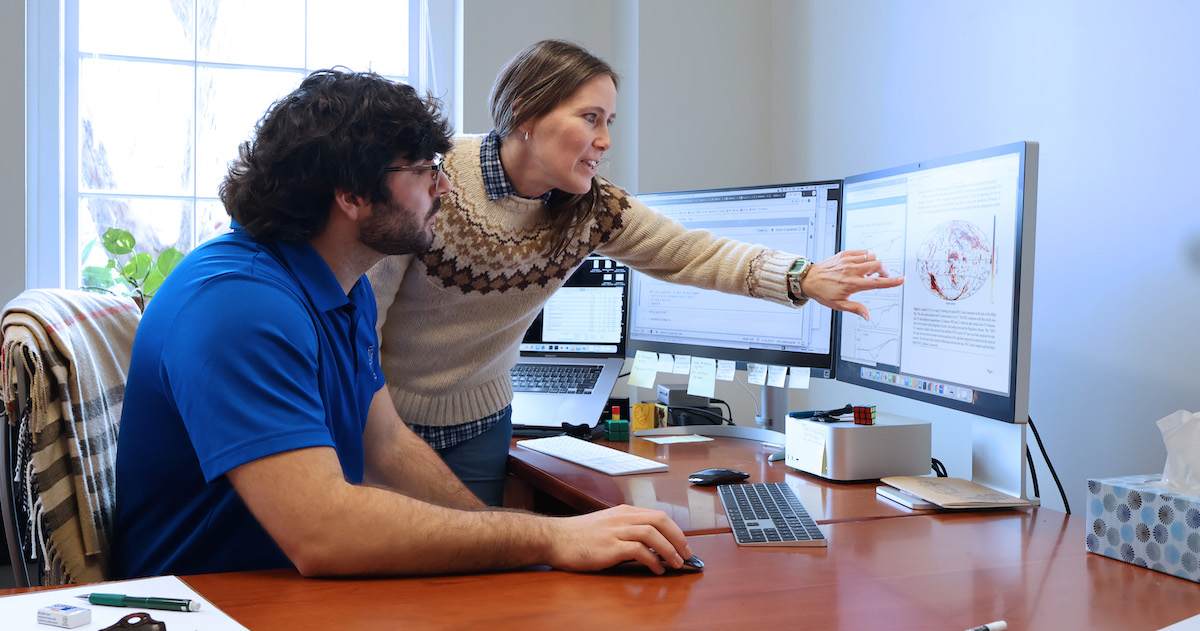
At first glance, the heart of the Milky Way might seem an unlikely place to find one of the coldest substances in the universe. Yet Dr. Frances Cashman, assistant professor of physics at Presbyterian College, and her colleagues did just that.
“It was kind of like finding an ice cube in a volcano,” Cashman said with a smile, recalling the moment she and her research team discovered molecular hydrogen streaming out of the galaxy’s center. “You’re left asking, why is this here? How long is it going to last? What made it shoot out?”
That surprising discovery was only the beginning. Cashman’s scholarship has led to a series of groundbreaking publications in leading astrophysics journals. This summer, she celebrated the release of her third paper from a multi-year NASA program focused on the complex mixture of gas and dust in the inner region of our Milky Way Galaxy. At the same time, she helped author a forward-looking study that will guide the design of NASA’s next great space telescope, the Habitable Worlds Observatory.
Together, the two projects capture Cashman’s unusual position as both a front-line astrophysicist mapping the galaxy and a teacher whose enthusiasm for science is inspiring undergraduates at a small liberal arts college to aim for the stars.
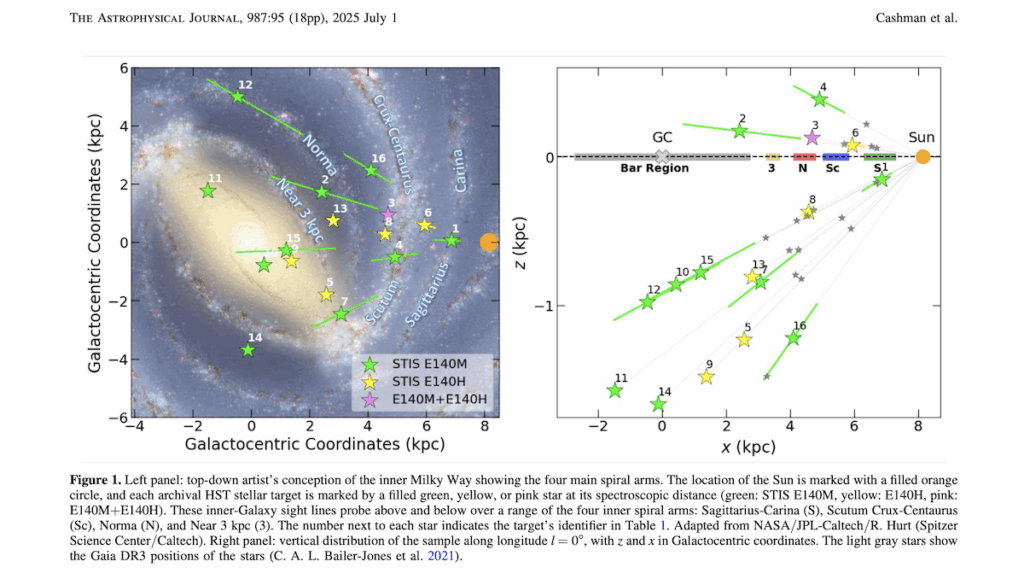
Charting the unseen universe
Cashman’s most recent paper, published in The Astrophysical Journal in July, was the culmination of years of work analyzing ultraviolet data gathered by the Hubble Space Telescope.
Her team studied 16 massive stars in and around the Milky Way’s center. Each star served as a kind of cosmic flashlight: as its light passed through intervening clouds of gas, some wavelengths were absorbed, leaving faint but measurable gaps in the spectrum. By studying those missing pieces, Cashman could determine what the clouds were made of, how hot they were, and how fast they were moving.
“It’s like sending starlight through a prism,” she explained. “If nothing is in the way, you get a perfect rainbow. But if there’s material between us and the star, some colors are missing because atoms or molecules in those clouds stole those photons. And we know exactly which atoms steal which colors.”
The results were striking. Her team identified 800 distinct components of gas along the 16 sight lines. More than three-quarters of them were moving in a way consistent with the rotation of the Milky Way’s disk. That means even gas found far above or below the thin layer of stars still “remembers” where it came from.
“We wondered if this gas would behave randomly, like smoke drifting away from a campfire,” Cashman said. “Instead, we found that it’s still tied to the galaxy, still co-rotating with the disk.”
The findings provide a new data-rich foundation for theorists who build models of how galaxies evolve. Cashman’s team created machine-readable tables of all 800 components—velocities, widths, and locations—that have already attracted wide interest from astrophysicists.
“When I presented the results at the Green Bank Observatory, all the simulators immediately asked, ‘Where can I get that file?’” she said. “It helps to feed their models with real data. That’s how science moves forward.”
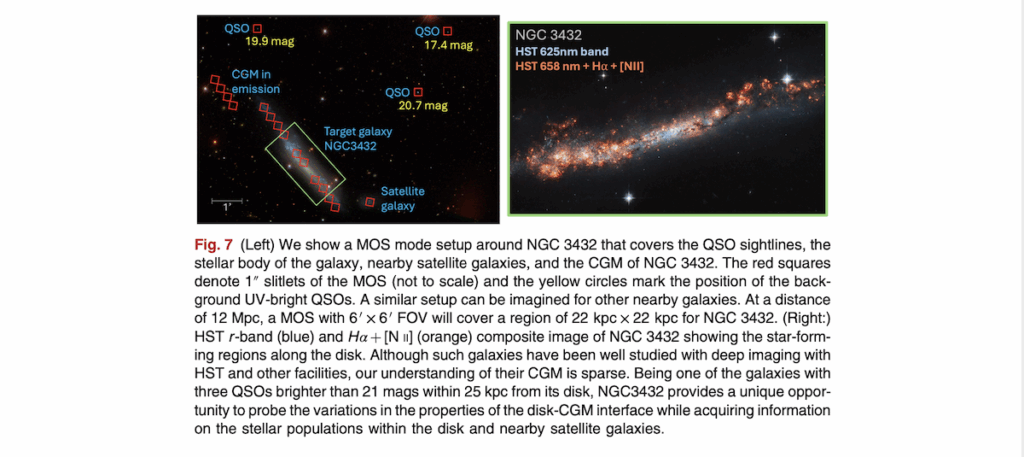
Looking ahead to the next great telescope
While Cashman’s ApJ paper looks inward at the Milky Way, her second major publication this year looks forward—toward the next generation of space observatories.
In June, she coauthored a paper in the Journal of Astronomical Telescopes, Instruments, and Systems that lays out the scientific requirements for the Habitable Worlds Observatory (HWO). Expected to follow the Roman Space Telescope in the 2030s or 2040s, HWO will be NASA’s successor to Hubble and the James Webb Space Telescope.
“Hubble is incredible,” Cashman said. “But we need another telescope with better access to the ultraviolet to continue making discoveries.”
Cashman is part of a national working group defining what those capabilities should be. She contributed especially to the case for molecular hydrogen, arguing that HWO must be able to detect light at very short ultraviolet wavelengths to track this key building block of galaxies.
“There are some who say we only need to go down to 1,200 angstroms,” she said. “But if we stop there, we lose access to molecular hydrogen and many important lines. We’d miss entire pieces of the puzzle.”
The group’s recommendations include a mirror roughly eight meters in diameter, extremely high spectral resolution, and a new type of multi-object spectrograph able to observe many stars or quasars at once. Those capabilities would allow astronomers to trace how gas flows into, through, and out of galaxies—the very processes that fuel star formation and shape cosmic ecosystems.
“It’s exciting to know the work we’re doing now could directly influence the design of the next Hubble,” she said. “That’s a once-in-a-career opportunity.”
Bringing big science to a small college
Cashman’s dual role—as a scientist advancing her field and as a teacher at Presbyterian College—makes her work especially significant.
“At a large research university, undergraduates often don’t touch data like this until graduate school,” she said. “Here, our students can jump right in.”
This summer, physics major Constantine Gandis joined her through PC’s Summer Fellows program. He analyzed spectra from a high-velocity cloud near the Milky Way and determined its chemical composition and ionization state.
“He crushed it,” Cashman said proudly. “He was fitting spectra I didn’t get to work on until grad school. That’s the kind of opportunity PC students can have.”
Cashman is already planning to involve students in future Habitable Worlds Observatory projects, giving them the chance to contribute figures, analyses, and even sections of case studies. She sees the overlap between physics, astronomy, and engineering as fertile ground for students interested in careers ranging from astrophysics to aerospace engineering.
“It’s physics, but the laboratory is out there in the universe,” she said. “That’s what makes it so exciting.”
Passion for discovery
For Cashman, research is not a matter of professional survival.
“At PC, it’s not publish or perish,” she said. “I do this because I love it.”
That passion comes across in her classrooms and her conversations. She sees each new discovery not as a solitary achievement but as a way to draw students into the adventure of science.
“Why not do it?” she said with a laugh. “It’s fun. And our students feel that enthusiasm. They see they can do really cool, meaningful work right here.”
By combining world-class astrophysics with undergraduate teaching, Cashman is carving out a rare niche. Her work has already illuminated the unseen structure of the Milky Way and set the stage for future telescopes that will probe galaxies across the cosmos.
And at the same time, she is training the next generation of scientists to take their place in that journey.
“Understanding our galaxy is the benchmark for understanding all galaxies,” she said. “The more we know about the Milky Way, the better we can understand the universe. And the more our students can be part of that, the better.”


